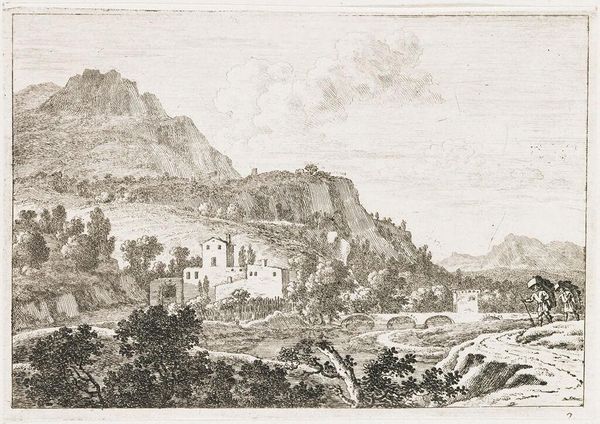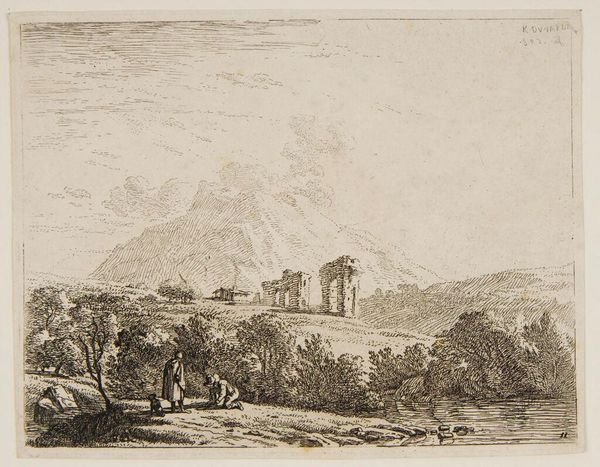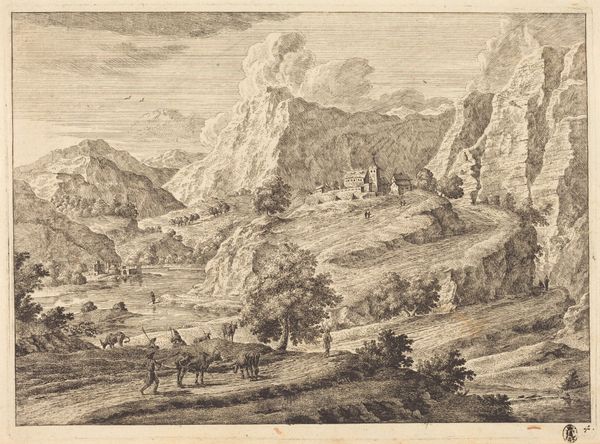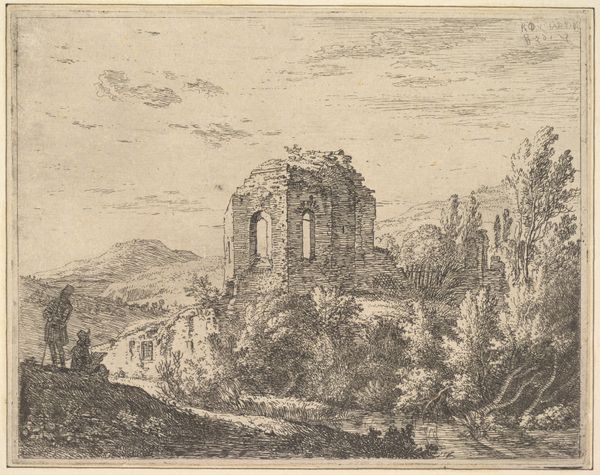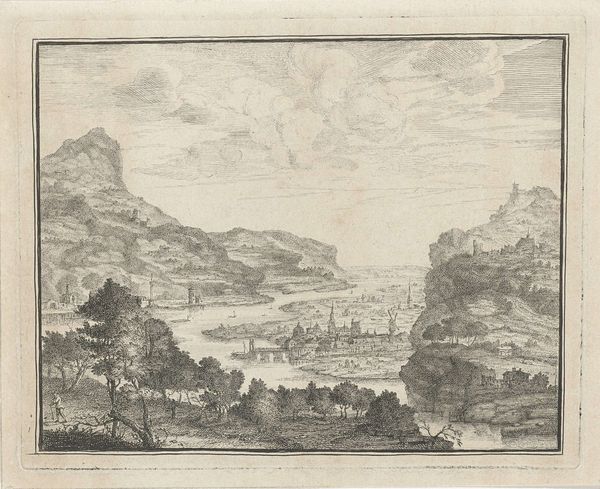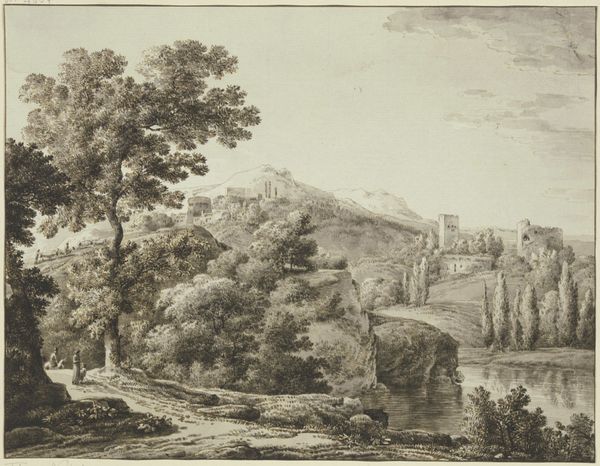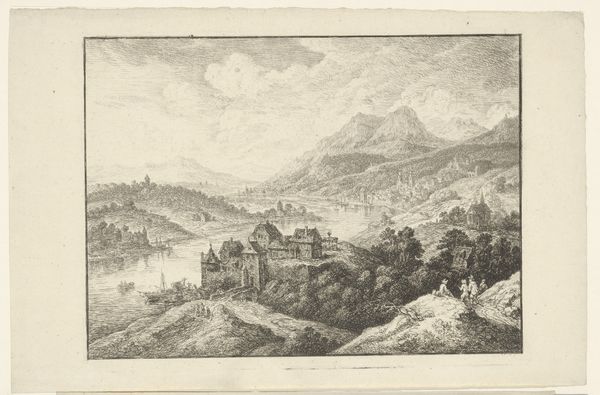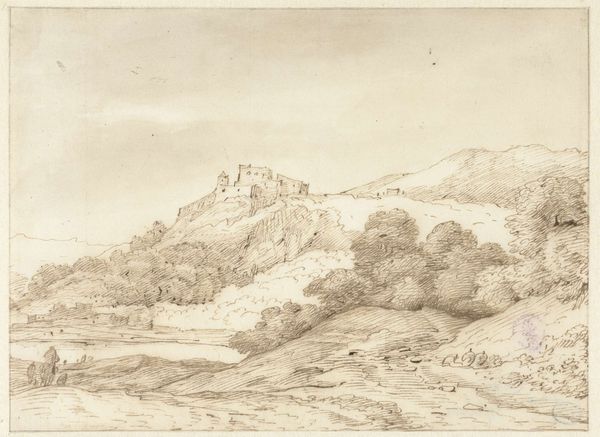
etching, engraving
#
baroque
#
pen sketch
#
etching
#
pencil sketch
#
old engraving style
#
landscape
#
river
#
engraving
#
realism
Dimensions: height 118 mm, width 173 mm
Copyright: Rijks Museum: Open Domain
Editor: So, here we have "Two Peddlers by a River," an engraving from somewhere between 1623 and 1705, currently at the Rijksmuseum and created by an anonymous artist. It's fascinating, especially the density of the lines used to create depth. What can you tell me about it? Curator: What I see immediately is an etching emphasizing the relationship between labor and the land. Notice how the fine lines, the product of meticulous work, mimic the strata of the rock face, connecting the human effort of the engraver to the natural world being depicted. Editor: That's interesting! So, the act of *making* the image mirrors the *image* itself. Curator: Precisely! The seemingly simple scene of two peddlers isn’t just a pastoral view. It is an assertion of human interaction with the landscape. Consider the production of engravings; the skilled labor, the printing process, and the circulation of these images to a broader market. This wasn’t merely aesthetic, but deeply tied to burgeoning commercial activity. How does seeing this impact your impression of the landscape itself? Editor: It reframes it! It’s not just a pretty scene. The existence of this image meant it was part of the marketplace; people bought, sold, and traded it. Curator: Indeed. And consider the materials used: the paper, the ink, the metal plate, and the tools. Each material element speaks to the technical and industrial capacities of the time. Where were these things sourced? What was the value and availability of them? Editor: That adds a completely different layer. So, viewing the work, you consider labor, access, production... not just what’s *in* the frame, but everything that went *into* making the frame! Curator: Exactly! Seeing the art this way shifts the focus from aesthetic value to the material and economic networks that underpin its very existence. I hope next time you approach a work of art, you'll ask where it came from.
Comments
No comments
Be the first to comment and join the conversation on the ultimate creative platform.
